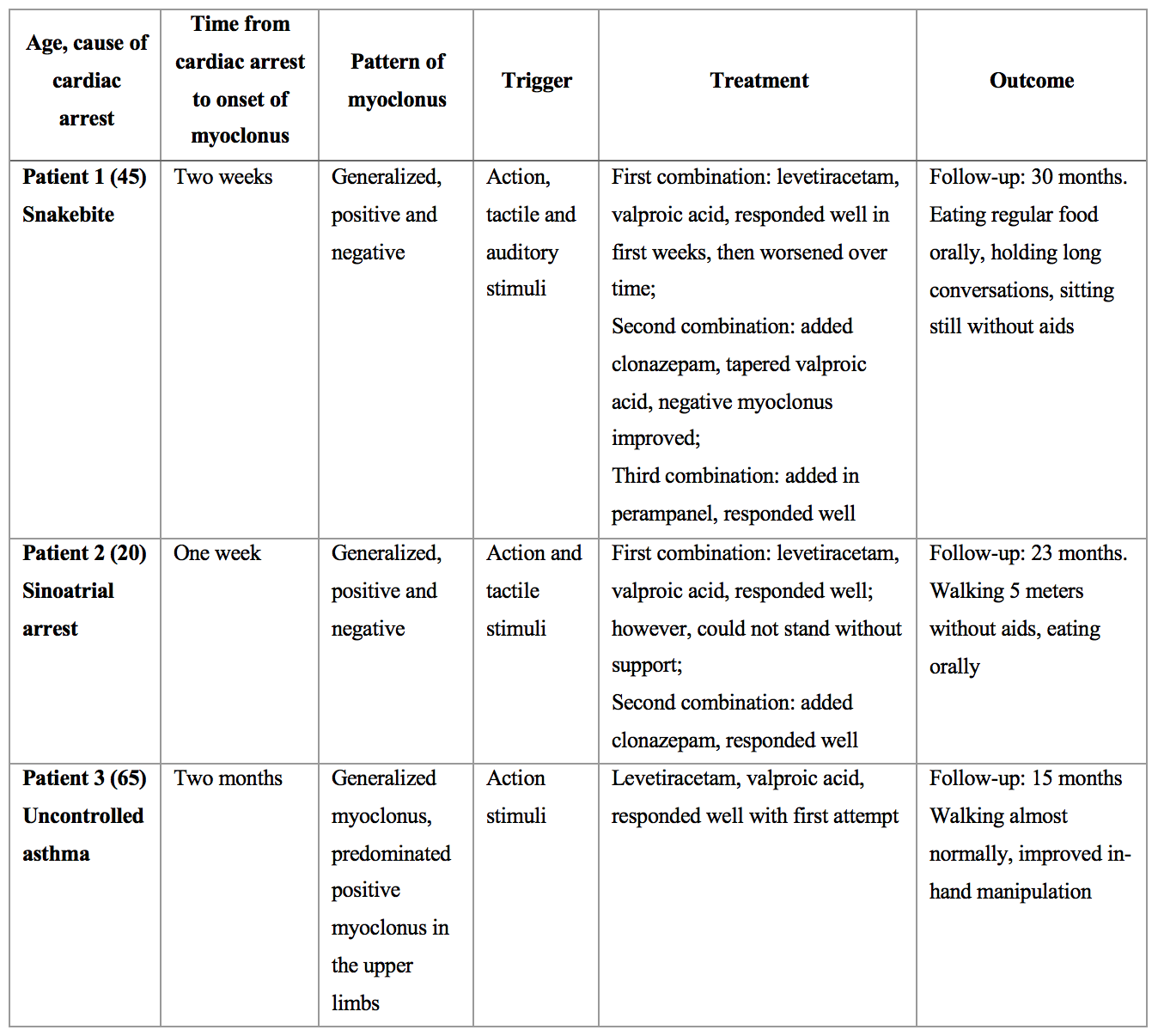Category: Myoclonus
Objective: To describe clinical features and treatments in patients with Lance–Adams syndrome (LAS) in Vietnam.
Background: Lance–Adams Syndrome (LAS) is a rare neurological disorder. Because of the confusion with epilepsy and its infrequency, LAS challenges Vietnamese clinicians, especially those who work in the ICU. LAS presents with variable clinical features, and each patient requires tailored treatment.
Method: A case series of three patients.
Results: The major clinical features, treatment and outcome are listed on the table below.
[table1]
No epileptiform discharges were recorded, and brain scans revealed no abnormal structural lesions in all patients. The durations from cardiac arrest to LAS onset varied among patients. All of patients manifested with both positive and negative myoclonus. Patient 1’s myoclonus was triggered by auditory stimuli, which may suggested the brainstem origin [1]. The treatments were tailored according to clinical responses, which showed clonazepam may be more beneficial on negative myoclonus (patient 1 can sit still, and patient 2 can walk without aids after adding clonazepam).
Conclusion: Myoclonus characteristics are diverse among patients, which requires careful follow-up and tailored treatment.
table1
References: 1. Kojovic, M., Cordivari, C. and Bhatia, K. (2011) ‘Myoclonic disorders: a practical approach for diagnosis and treatment’, Therapeutic Advances in Neurological Disorders, 4(1), pp. 47–62. Available at: https://doi.org/10.1177/1756285610395653.
To cite this abstract in AMA style:
HA. Nguyen, HK. Vo. Lance – Adams Syndrome: a Case Series from Vietnam [abstract]. Mov Disord. 2024; 39 (suppl 1). https://www.mdsabstracts.org/abstract/lance-adams-syndrome-a-case-series-from-vietnam/. Accessed April 1, 2025.« Back to 2024 International Congress
MDS Abstracts - https://www.mdsabstracts.org/abstract/lance-adams-syndrome-a-case-series-from-vietnam/

